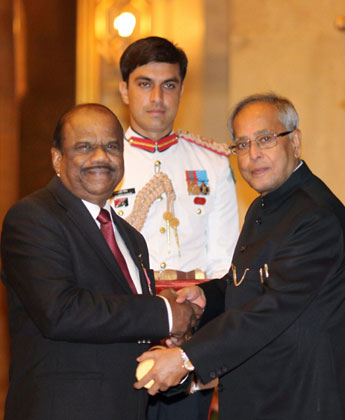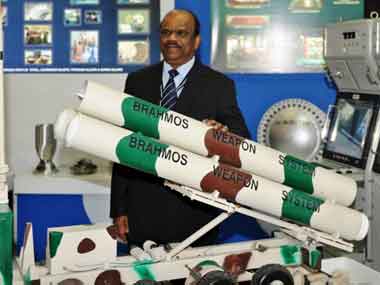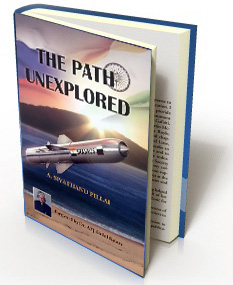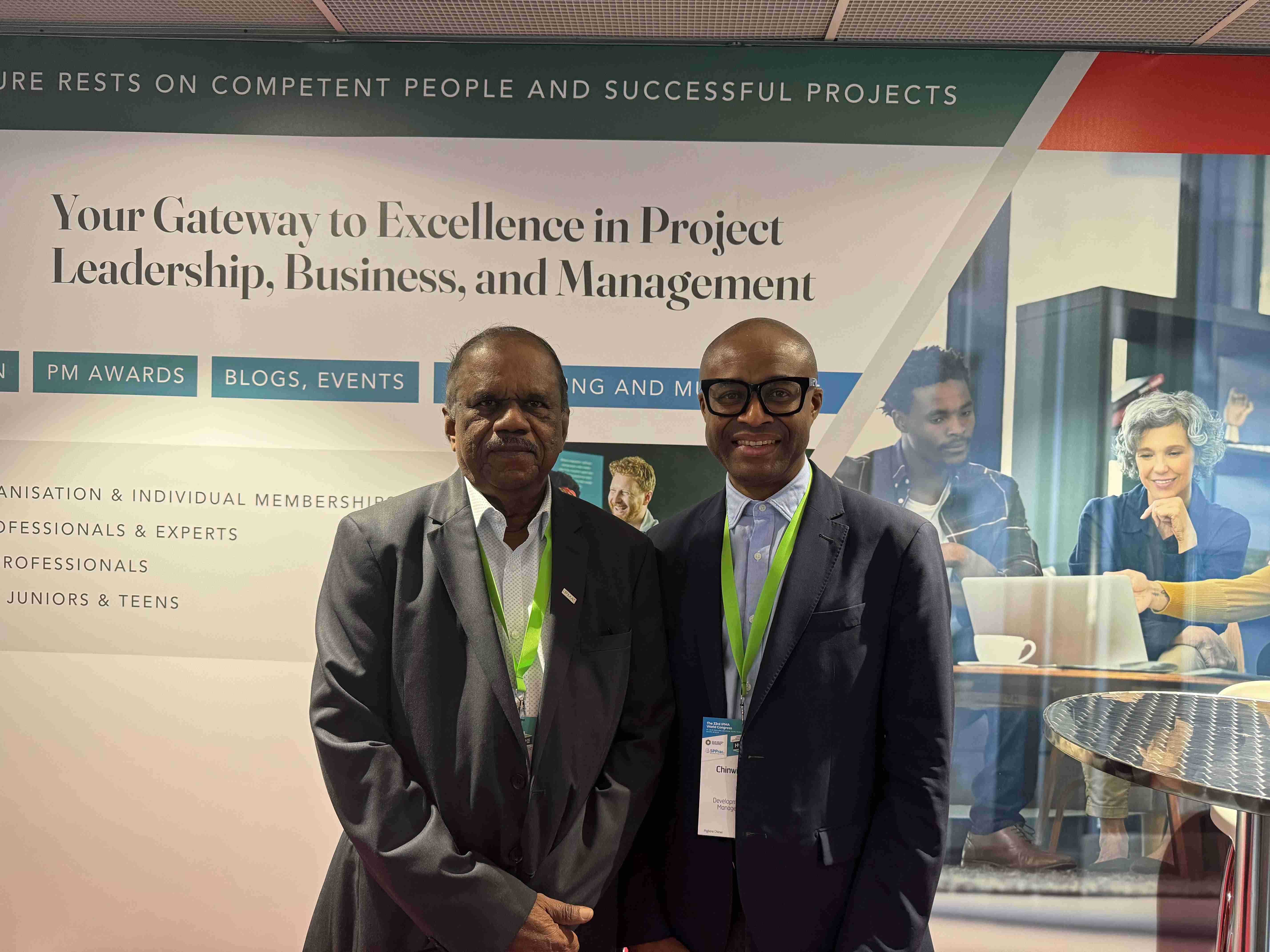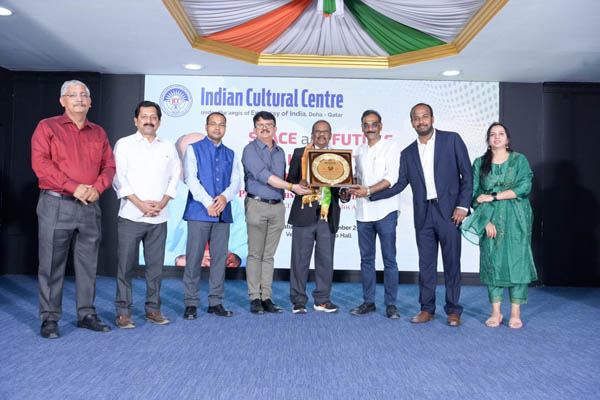23rd Graduation Day Ceremony
Adhiparasakthi Engineering College
08th April 2011
By
Dr. A. Sivathanu Pillai
“Making Impossible Things Possible through Indomitable Spirit”
I am indeed honoured and privileged to deliver the Annual Graduation Day Address of Adhiparasakthi Engineering College, Melmaruvathur. My greetings to all the graduates who have successfully completed their courses, His Holiness Arulthiru Adigalar, Correspondent, the principal and faculty members for their excellent and devoted efforts to shape the young minds for meeting the challenges of tomorrow. I extend my special greetings to the proud parents of the students who are graduating today, whose unflinching dedication and support have made it possible for their success.
Dear graduates, this is a great day in your life, and take-off point for a bright future. You have chosen the important profession of engineering which can help building a great India, we are all dreaming for. I would like to share my experiences with you. After my graduation in engineering in 1969, I was fortunate to work with three great technology leaders; Dr. Vikram Sarabhai – a great visionary & the father of space research in India, Prof. Satish Dhawan – an institution builder and a great Technologist who nurtured the space programme with visible targets, and Dr. APJ Abdul Kalam – the father of missile programme and people’s president. I am telling this because what we learn through others’ wisdom and experiences, we can shape our career path in a leap-frog trajectory in life. You will come across several experienced leaders in your career path. Learn the best out of them and add as inputs to your knowledge, experienced and virtues to grow further. The power of mind is enormous and there is no word in your dictionary as “Impossible ”. What you aim for, you will achieve if you have the spirit of achievement and determination. You need to build courage and face problems in life.
India’s freedom movement was driven by patriotism and sacrifice with unity of minds. There was an urge in many of the Indians to excel the foreigners in every field of life. This led to many Indians showing their talents not only for the freedom but also for the development. Prof. Chandrasekar, the famous scientist in astronomy in his biography, ’Chandra’ by Kameshwar Wali, says “before 1910 there were no Indian scientists of international reputation, but after the first world war, between 1920 and 1925 we had suddenly five scientists of international repute (JC Bose, Sir CV Raman, Meghnath Saha, Srinivasan Ramanujan, and Prof. Chandrasekar himself) emerged. I myself have associated this remarkable phenomenon with the need for self-expression, which became a dominant motive among the young during the national movement. It was part of the National Movement to assert oneself. We could show before the West in their own realm that we were equal to them.” Like science, the first vision of freedom movement also generated great leaders with indomitable spirit.
So, I would like to talk to you about some experiences that will emphasize on “ Making Impossible things Possible through Indomitable Spirit”.
Indomitable Spirit in post independence era:
Dr. Vikram Sarabhai, a great visionary of our time envisioned Space Research in India and gave a profile. Development of satellite launch vehicles was one of his focussed areas. Prof. Satish Dhawan nurtured those aim and led to the SLV-3 flight. It was 10th August 1979. The count down for India’s first experimental launch of SLV-3 (SLV-E01) was progressing at SHAR Centre of ISRO for the last 36 hours and we were at T-1 hour for the launch. Every subsystem gave green signal in the checkout consoles, indicating its perfect health. Everyone present was thrilled to see the count down and with great anticipation awaiting the result for their 7 year effort of putting together the technologies, skills and products to inject the Rohini Satellite into the near earth orbit.
At that time of important phase of final checks at T-8 minutes, the reaction control thrusters which were housed in between the first and second stages gave warm up pulse, by mixing the Hydrozene propellant and the Red Fumic Nitric Acid (RFNA). The warm up was necessary for the thrusters to be ready for the final operation of the control system. Inside pressure of the oxidizer tank gave a drop, indicating something wrong. During automatic checkout from T-6 minutes, checkout computer put a “hold” on to the mission. The experts met at the block house and the vehicle director opined that the pressure of the tank, though was low, was sufficient for the control system performance and advised to progress the launch faster. The Mission Director gave an overriding command to go ahead for the launch. At T-0, the SLV-E01 took off perfectly and the first stage performance was as predicted, and SLV-3 was on its course. After separation of the first stage, the second stage motor ignited, but could not go as per the trajectory and the whole system tumbled due to loss of control and fell into the Bay of Bengal. Thus, in one stroke, the 7 years of hard efforts of more than 400 scientists, engineers and technicians came to naught.
Mission Director wanted to know why this has happened. Everyone waited for the telemetry results to come. Mission Director took charge and got the detailed analysis made throughout that whole night and found the reason for the failure. It was a very disastrous situation. The solenoid valve which opened to give the warm-up pulse for the reaction control system remained open and all the RFNA stored in the 2nd stage control system leaked before the launch. Mission Director took the responsibility on his shoulders and the SLV-3 team worked hard and the next launch SLV E-02 on 18th July 1980 was a total success, orbiting the Rohini satellite in near earth orbit. Jubilant everywhere. Prof. Dhawan now asked the Mission Director to address the media.
You know, who was the Mission Director? Who was the leader having such will power to come out of the problem and succeeded in the mission? That was Dr. APJ Abdul Kalam, the Project Director who put India in the Space Club. How he could be able to succeed. From the level of paper boy at Rameswaram, he studied well and dreamt to fly as a pilot in the Indian Air Force. He went for the interview where he was rejected. His aim of joining IAF shattered. Still he did not give up his mission. He became Aeronautical Engineer and joined ISRO and succeeded in launching SLV-3, the first indigenous satellite launch. Failures in life should not de-motivate you. We should consider the failures as the stepping stone for success, with indomitable spirit.
“We need an indomitable spirit and courage to face and learn from failures to succeed in any mission”
India’s missile programme, IGMDP was led by Dr. APJ Abdul Kalam with his vision of making India a strong & self-reliant country. In IGMDP, India made Prithvi and Agni operational as strategic missiles.
Agni
Important technology that required for Agni - a two stage solid propellant, was the re-entry technology. Agni after take off goes to space to an altitude of 500 km and travels back to the earth atmosphere. At 85 km altitude, it re-enters the atmosphere with a speed 14 times the speed of the sound and the temperature experienced by the re-entry module is 3500 deg C. It is very important the re-entry module must protect its shape and structural integrity even at this condition for the mission to be accomplished to deliver the payload at the right destination. This needs a very exotic material called Carbon-Carbon. Only two countries knew this technology when we started development of Agni. It was a very challenging task because with almost no basic information and technology we have to develop this re-entry module. In a short span of six years leading a team of young dedicated scientists, this re-entry technology was developed and flown in the Agni mission successfully. This shows empowering the scientists and giving a challenge to them will result in a magnificent technology. Such challenges and opportunities with empowerment can definitely bring extraordinary results from our youth - both boys and girls.
Indian Supercomputer
Re-entry being the most critical aspect of such class of missiles, we had to configure the optimal design of the re-entry nose cone of the Agni. This required a hypersonic test facility for evaluating hundreds of configurations which did not exist in India at that time. So, there was a requirement of mathematical solution to the problem. The technique used was Computational Fluid Dynamic and it required supercomputing to do that.
India had a XMP CRAY super computer for weather prediction at Indian Meteorological Department, New Delhi. Restrictions were imposed by the US Government not to use this computer for any other purpose. Hence, India could not use it though it was available. Selling a supercomputer was denied to India. This triggered the minds of our scientists to develop within the shortest possible time a parallel processing computing system which can meet the requirements of Agni and similar projects. Initially the work started using conventional Euler Codes and used conventional PC’s and each grid iteration took 9 days. As there were 100000 grid points, many days will be lost. With the use of advanced software codes like BHEEMA and KAREESHMA indigenously developed by our young scientists / engineers, and developing a new parallel processor PACE, a 32 node super computer, each of these iterations was brought down to 5 minutes. Our CFD codes are claimed to be one of the best in the world. A top class CFD centre has emerged a centre for excellence at the campus of Indian Institute of Science. This was a revolution in self-reliance in super computing systems and computational fluid dynamics. You can see the “Indomitable Spirit” of young scientists behind the development of supercomputer for Agni project.
Prithvi and Manoeuvrable trajectory
Another interesting innovative development was for the Prithvi missile. Conventionally, ballistic missiles follow a parabolic trajectory from take-off to the impact point. Technology has grown to track such missiles, either through satellites or long range radars, as the missiles fly at higher altitude. Then the enemy country can send interceptor missiles and destroy the ballistic missiles. In order to prevent the missile’s trajectory not to be known to the enemy, Prithvi missile has both pitch and yaw manoeuvring with continuous changing positions. This will make the other country difficult to track and almost impossible to intercept. Manoeuvring trajectory is an innovative idea of our Indian Scientists. Sensors used in the Inertial Navigation System help in the accuracy of the trajectory and impact at the required target. During flight, errors occur due to variation in propulsion and aerodynamic parameters. A very high accuracy sensor is required to have almost zero error in position update. The young missile scientists of DRDL, who have specialised in IT joined together and brought out an innovative solution to inject software in the sensor based on error modelling. The errors caused by the coarse sensor have been corrected by the software for drift compensation, while the missile is flying through out its flight path. This continuous updating improves the accuracy of the sensor and thereby the performance of the missile. Advanced mission software is used for simulation and pre-flight evaluation in the laboratory through Hardware-in-Loop Simulation tests to prove the system. While India embarked on development of a short range ballistic missile Prithvi later than developed countries, we could overtake them through unconventional concepts and advanced software integrated with the hardware.
Multi function Radar
Another exciting example, I have come across was the development of Akash missile. In a war theatre, the enemy comes in the form of multiple aircraft simultaneously. So, we need a system which can destroy multiple targets at the same time. Akash missile system is guided by a phased array radar which can track multiple targets and guide multiple Akash missiles towards these targets simultaneously. To achieve such intelligent radar to perform command and guidance, we need a very important technology called Phase Shifters. When we started the missile development we had no clue how to make these phase shifters. No country will give this technology. Prof. Bharati Bhatt from Indian Institute of Technology, Delhi was the only one in the whole of our country knowing what is phase shifter. But she had no experience of developing such a device. When we approached her for development of the phase shifters, she was amazed of the daunting task before her. But she took up the challenge and in three years time, she had developed phase shifters and gave the technology to Central Electronics Ltd for production. When we see today Akash flying and hitting multiple targets we remember Prof. Bharati Bhatt.
BrahMos Supersonic Cruise Missile
The two world wars have seen the emergence of new weaponry. One important development was cruise missiles which can fly at low altitude and precisely demolish the target. In the 1991 Gulf War, we saw a dominance of Tomahawk cruise missile. All the cruise missiles in the world is subsonic. The emergence of Indo-Russian joint venture ‘BrahMos’ is a major break-through in missile technology, because BrahMos is a Supersonic Cruise Missile. India and Russia jointly established “BrahMos” to design, develop, produce and market a world class supersonic cruise missile system. BRAHMOS missile is a world-class product using the synergy of technological competence and consortium of industries of both partner countries. The BRAHMOS missile is the fastest operational cruise missile existing in the world today and can be launched from any type of platform - land, sea, sub sea and air, and precisely reach the targets either on land or at sea with high lethal effect. The missile has undergone Twenty four successive successful flight trials and has been inducted by the Indian Navy and by the Indian Army. In one of the flight trials of land attack version conducted on 20th Jan 2009, the missile had an excellent flight throughout its flight and only in the final stage it missed the target. The mission was aborted after the missile went off-target. The bug was identified and software coding was corrected to ensure the hit of the target and within one and a half month’s time, on 04th March 2009, the system had been successfully flight tested in the presence of Army Personnel. Another flight trial conducted on 29th March 2009 by the Army Personnel that proved the successive success of the system. Army accepted the Block II version of BrahMos and gave production order. The success came from the leadership through constant support, encouragement and guidance to the entire team. Today, Indian Army is the only Land Force in the world to have a land attack Supersonic Cruise missile for precision attack. This shows that India can leap frog in technology to attain a unique position in the world, if we are determined to achieve it. So We can do it.
Conclusion
Young friends, as you all know technology changes rapidly and the humans are in the race of exploring newer technologies for their benefit. The advent of nanotechnology has given a new dimension in the research field and the future is going to be dominated with this newer technologies. Value based education with spiritual bliss will definitely make you to get hold of the future.
India has a vision to become a developed nation by 2020. It is possible only if we achieve a sustained GDP growth rate of over 10% for a decade, along with upliftment of 22% of our population below the poverty line and better quality of life in terms of education, healthcare, employment, infrastructure and security. Technology plays a vital role in realizing this vision.
India today is in a unique position in the world attracting all developed countries to look at it because India is the best resource hub of young intelligent minds. The history of India dominating during the civilizational age is coming back when the society has moved from agriculture to knowledge. This is a point of greatest advantage for all of us and it provides an opportunity for India to become an economic power and attain Developed India status. The strong 540 million youth and children have the tremendous responsibility to shape India’s future. As Dr. Abdul Kalam says, you should remember three steps to succeed in the mission of life. They are: (1) Aim high; (2) Acquire knowledge and work hard and (3) Perseverance to overcome problems.
As Thiruvalluvar says, you should have a big aim:

To achieve the goal, we should work hard continuously. As Bharathiar says

When you work hard in achieving the goals, you will face many hurdles and problems. You should overcome them and successful by defeating the problems. As Thiruvalluvar Said,

I would like to quote the following for the young graduates,
Sir CV Raman said at his age of 80 years in a convocation:
“Success can only come to us by courageous devotion to the task lying in front of us. What we lack is perhaps courage, what we lack is perhaps driving force, which takes one anywhere. We have developed an inferiority complex. I think what is needed in India today is the destruction of that defeatist spirit. We need a spirit of victory, a spirit that will carry us to our rightful place under the Sun, a spirit, which can recognise that WE, as inheritors of a proud civilisation, are entitled to a right place on this planet. If that indomitable spirit were to arise, nothing can hold us from achieving our rightful destiny.”
Young friends, you have a great future in front of you. The world is going to see many more marvels and India will certainly become a global leader. You have a greater role by far than you ever dreamt about you. Prepare for it. I wish you all the best for a wonder future for you. Blessings of Melmaruvathur Adhiparasakthi and Adigalar will be with you always.
Thank you




